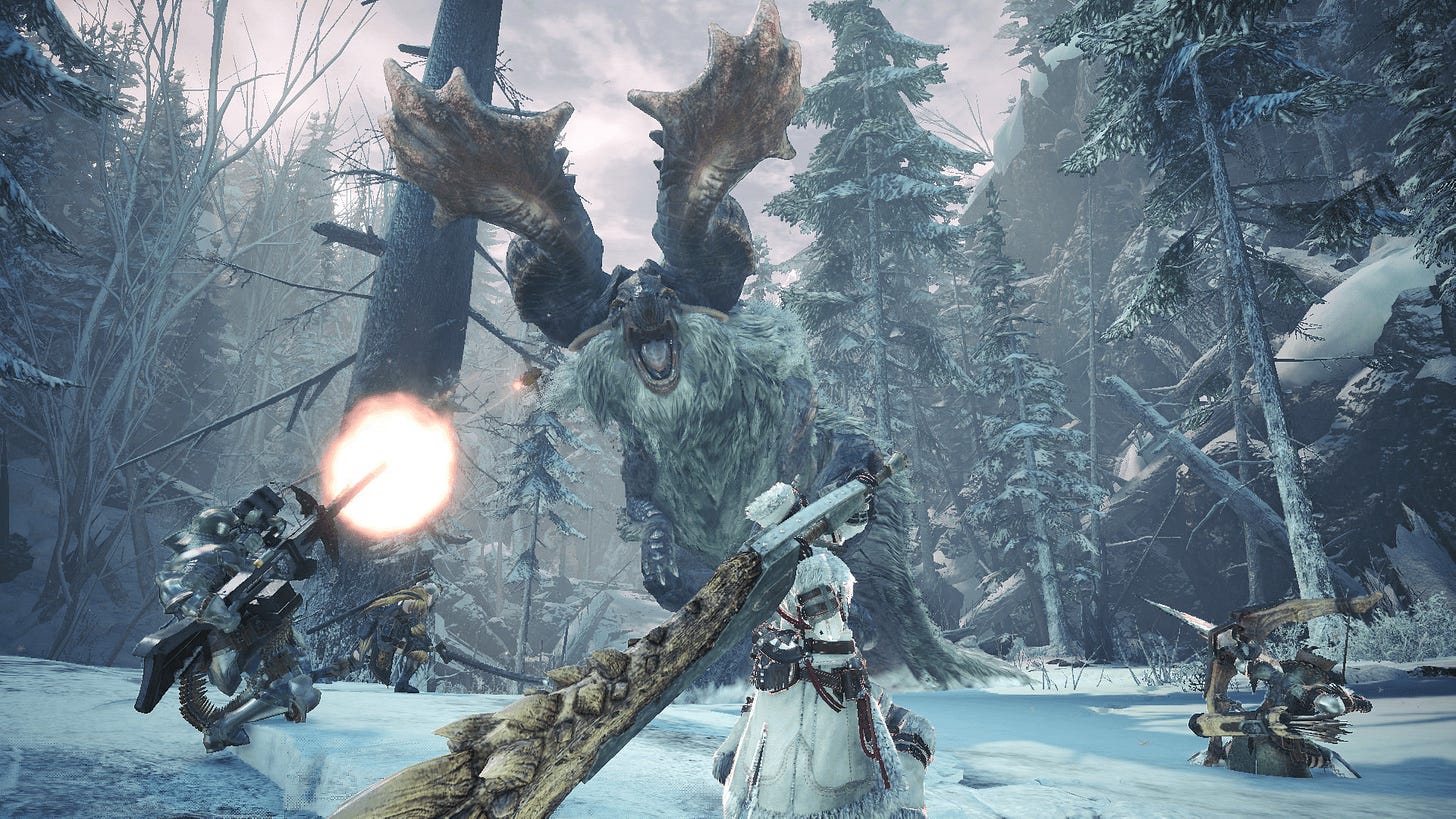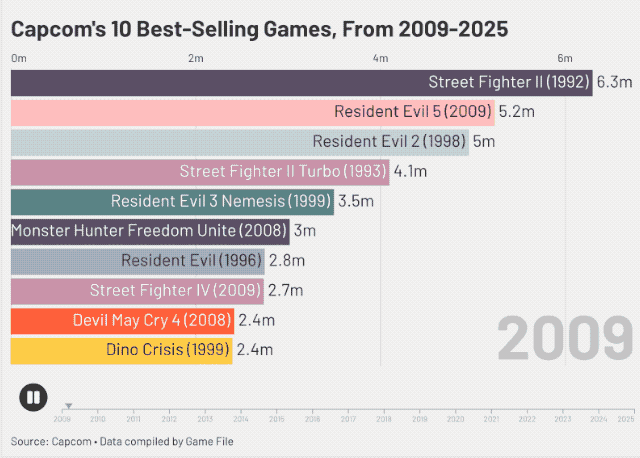7 new charts that help explain Capcom
Game File crunches 25 years of sales data from one of the world's top gaming companies. The results tell a story about Resident Evil, Street Fighter, Monster Hunter, DuckTales and even GTA
In November 2001, nearly a quarter century ago, the Osaka-based video game developer and publisher Capcom published a list of 27 games.
At the top was the Super Nintendo version of Street Fighter II, the fighting game released in June 1992. It had sold, Capcom’s chart showed, 6.3 million copies.
That made it Capcom’s best-selling game of all time.
Second on the chart was Resident Evil 2, the PlayStation survival horror game released in January 1998. By that point, it had sold 4.95 million units
Capcom was mostly a Street Fighter and Resident Evil company back then. The very top of the chart made that clear.
Coming in third was Street Fighter II Turbo, then more Resident Evil games, a survival horror dinosaur game called Dino Crisis, more Resident Evil, another version of Street Fighter II and, in the 9th and 10th slots, a pair of Disney-branded games, 1993’s Aladdin for the Super Nintendo (1.75 million copies sold) and 1989’s DuckTales for Nintendo Entertainment System (1.67 million units; a Game Boy version ranked a little lower but had also cracked a million).
As best I can tell, this chart, still embedded in a quarterly earnings report on Capcom’s website, marked the start of a little-appreciated project at the vaunted game maker: a public accounting, year after year of the best-selling video games in Capcom’s history.
There are some gaps in the early data. I found Capcom’s charts from 2001-2003, then nothing for a few years. Since 2009, though, Capcom has published this list of million-selling games directly on its website, updating it several times a year to add new games that have achieved million-selling platinum status and to add to the tallies of games on the list that continue to sell.
Today’s list of Capcom’s million-selling hits is 124 games deep, far more than the 27 of 2001.
Its length is a testament to Capcom’s enduring ability to produce popular new games.
The oldest game on the list is 1986’s Ghosts 'n Goblins at 1.64 million copies sold.
The newest is February 2025’s Monster Hunter Wilds at 10.5 million.
Capcom’s scale of success has changed. These days, that old chart-topping edition of Street Fighter II wouldn’t even make the top 10, which is currently fully comprised of games whose sales have exceeded 10 million copies.
The top game on the current Capcom platinum-seller list is 2018’s Monster Hunter World at 21.7 million copies sold.
At the bottom, four games clock in at 1.00 million copies, including 2006 PS2 game Devil May Cry 3 Special Edition
So many things to show you…starting with a bar chart race
Over the last few weeks, I’ve been pulling data from different versions of Capcom’s best-selling games chart from the past 24 years. I’ve pulled archived versions back to 2001 and pored over them, tracking changes that help tell the story of one of gaming’s most creatively and commercially successful companies.
The first chart I want to show you is possibly the fanciest one I’ve ever made…
(Note: If you see an animated chart below this paragraph, wonderful! If not, allow me to sigh. It’s been hard to get this chart to display correctly. If you see a gray box instead of a chart, tap it to load. If you’re reading via email, please give it 15 or so seconds to load. If that all fails or if it doesn’t animate with mesmerizing smoothness, please check out a high-res web version at this link. I promise it’s worth it, and not just because it took me ages to create it!)
This is a so-called bar-chart race. It begins with the Capcom’s all-time 10 best-selling games circa 2009.
It then morphs, year-by-year to the top 10 as it stands now.
(The chart excludes the three earliest years of Capcom sales data that I found, 2001-2003, in order to avoid an awkward time jump).
Please stare at that bar chart race a bit. Notice how much things change for Capcom over the years.
The first thing that caught my eye was how 2009’s Resident Evil 5 dethrones Street Fighter II….
… then how Resident Evil 6 nearly catches RE5 before Resident Evil 7 blows right past it….
…. then 2018’s Monster Hunter World arrives and radically changes the scale of the chart…
… followed by 2019’s Resident Evil 2 remake, which ushers a wave of remade classics into the top 10.
That chart was fun to make and is fun to look at, but I knew there was more to glean. As I went through the data, I observed the tectonic shifts of Capcom’s premiere franchises, as the company of Street Fighter and Resident Evil was reshaped to become the land of Monster Hunter and then formed new peaks with a radical remaking of classic Resident Evil games.
I also spotted the franchise flame-outs, noticing how series that seemed ascendant wound up producing new releases that failed to make the million-seller list.
Along the way, I also found some quirks:
The handful of Capcom games that, based on the charts, needed six, seven, or even eight years to sell a million copies
The lone Resident Evil game that somehow didn’t sell a million copies for its original release, but then was released three times, with each of those rereleases surpassing the million mark.
Ready to dig in?
What a single franchise’s 30 years of success looks like
If you want to really appreciate what Capcom does and how it has become perhaps the industry leader at re-packaging and re-selling its best games, take a look at this chart I made of the 35 Resident Evil-branded games that have sold a million copies for Capcom since the series’ debut in 1996:
Keep reading with a 7-day free trial
Subscribe to Game File to keep reading this post and get 7 days of free access to the full post archives.




